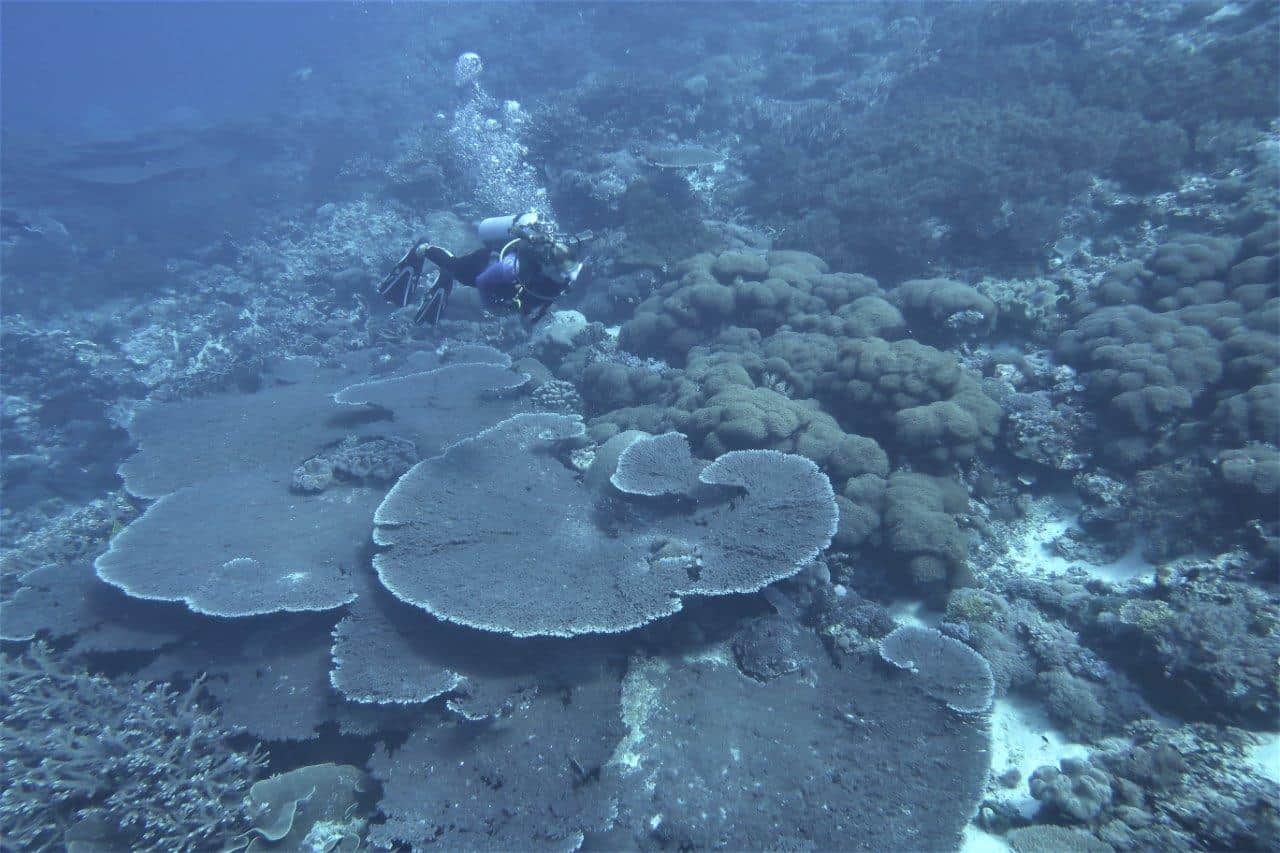By Rod Salm.
In these desperate days of dying corals, it is always uplifting to see vibrant coral communities. We certainly found these in many of the places we dived and snorkeled during our recent Forgotten Islands trip aboard the Seven Seas.
Our trips aboard the vessel with its happy, helpful crew are always great; but for a longtime observer of corals and their survival or demise in the tropical seas of the world, I keep searching for and celebrating areas where the coral communities display resilience to the stresses affecting reefs elsewhere. These areas stoke my optimism and keep hope for reef survival alive.
I look for deep dark colours of the corals as paling is a symptom of stress and for wide growth margins on branching and table colonies that demonstrate their vigor. I also seek out active repair of lesions, overgrowth of dead patches, and reorientation in the plane of growth in toppled or overturned corals as these indicate healthy energy reserves on which corals draw to maintain or reverse their growth. It is also important to look out for large old table and massive corals. We did find these too at many of the sites.
To be honest, while we found these hopeful signs in many places, we also found extensive areas of rubble that suggests a major stress event like a crown-of-thorns starfish outbreak, coral bleaching, destructive fishing, storm wave damage, or some combination of these. It is always hard to tell what caused the damage long after the event. But stress levels certainly are up as the increasing incidence of coral disease over the past decade would suggest.
On the upside, there were centuries old corals and a full range in sizes of table corals from small to more than 3 m across (largest >8.5 m), which suggests regular reproduction, settlement, and, in the case of the largest, long-term survival. Also, and we found no evidence of recent blast fishing and virtually no garbage entangled in the corals. Overall, coral recruitment was high holding out the prospect for recovery of these communities and leaving us encouraged by our observations and the promise of decades more great diving over vibrant reefs among the Forgotten Islands.
Rod Salm
December 2017
NOTE :
To reserve your spots or see available trips, please check out our schedule page :
Schedule & Availability
Please also don’t hesitate to reach out to us at [email protected] should you require any further information or need recommendations for accommodation or flights etc. Our reservation team would be more than happy to assist. Cheers!

